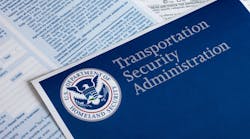The Federal Motor Carrier Safety Administration (FMCSA) released its own spin on the recent US Government Accountability Office (GAO) report that examined the Agency’s 2014 study on the hours-of-service (HOS) changes that were made in 2011 and implemented in 2013. The report also examined the rule’s assumptions and effects. The HOS rules govern the amount of time commercial truck drivers transporting freight can work and drive on a daily and weekly basis.
“This GAO report provides further evidence that the changes FMCSA made to the HOS rules improve highway safety by saving lives and lowering the risk of driver fatigue,” said Transportation Secretary Anthony Foxx. “This reinforces our belief that these life saving measures are critical to keeping people safe on the roads. We value the GAO’s independent review and will use their recommendations to further strengthen our Department’s research to ensure that we have the best data available to keep our roads safe.”
During the nearly 18 months in which the new restart provisions were in effect, the GAO report found evidence of reduced driver fatigue and enhanced roadway safety, according to the FMCSA reponse. Specifically, FMCSA officals claim the GAO report found:
- fewer fatal crashes;
- fewer drivers working the maximum schedules;
- lower risk of driver fatigue; and
- no increase in crashes during the 5 am to 9 am morning rush hour
Review of FMCSA research study and rule impact assumptions: The GAO report (GAO-15-641) also concluded that FMCSA’s HOS study data support the finding that the provision requiring drivers taking a restart to be off-duty for two nights reduces fatigue. The report found that the analysis and conclusion in FMCSA’s field study were supported by the data, and it confirmed FMCSA’s assumption that the rule would most likely impact those drivers working the longest permissible hours.
“Our agency’s mission is safety, and we’re pleased that the GAO’s findings provide evidence of the positive impact of the 2011 hours-of-service rules,” said FMCSA Chief Counsel Scott Darling. “We view this report as a confirmation that our commitment to continually refining our research efforts to focus on the most effective safety outcomes is paying dividends.”
In 2011 FMCSA issued new HOS provisions, with compliance required on July 1, 2013. One of the new provisions required that drivers working the longest permissible hours and using the previous 34-hour restart option include two overnight periods during the restart, thus providing a greater opportunity for restorative sleep. Drivers also were limited to using the restart only once every 168 hours.
In December 2014, Congress suspended these two HOS provisions pending further study by FMCSA. The Consolidated and Further Continuing Appropriations Act of 2015 required FMCSA to conduct another study to further examine the impact of the new provisions on driver fatigue and safety performance. That study is currently underway and is scheduled to conclude this fall.
The GAO report is in response to a congressional request to review the methodology and findings of FMCSA’s January 2014 Field Study on the Efficacy of the New Restart Provision for Hours-of-Service, a study mandated under MAP-21.
The GAO report also recommended that DOT adopt formal guidance outlining agency research standards. It went on to suggest that Congress consider directing DOT to study and report on how electronically collected driver schedule data can be extracted, stored, and analyzed in a way that addresses cost and privacy concerns.
FMCSA officials said the agency is on track to follow these recommendations, and a final rule will be released this fall requiring interstate truck and bus companies to convert from paper logbooks to electronic logging devices (ELD) to record and store drivers’ schedule data. FMCSA supports Congress modifying the MAP-21 restrictions to clarify that FMCSA may use ELD data for research purposes.









